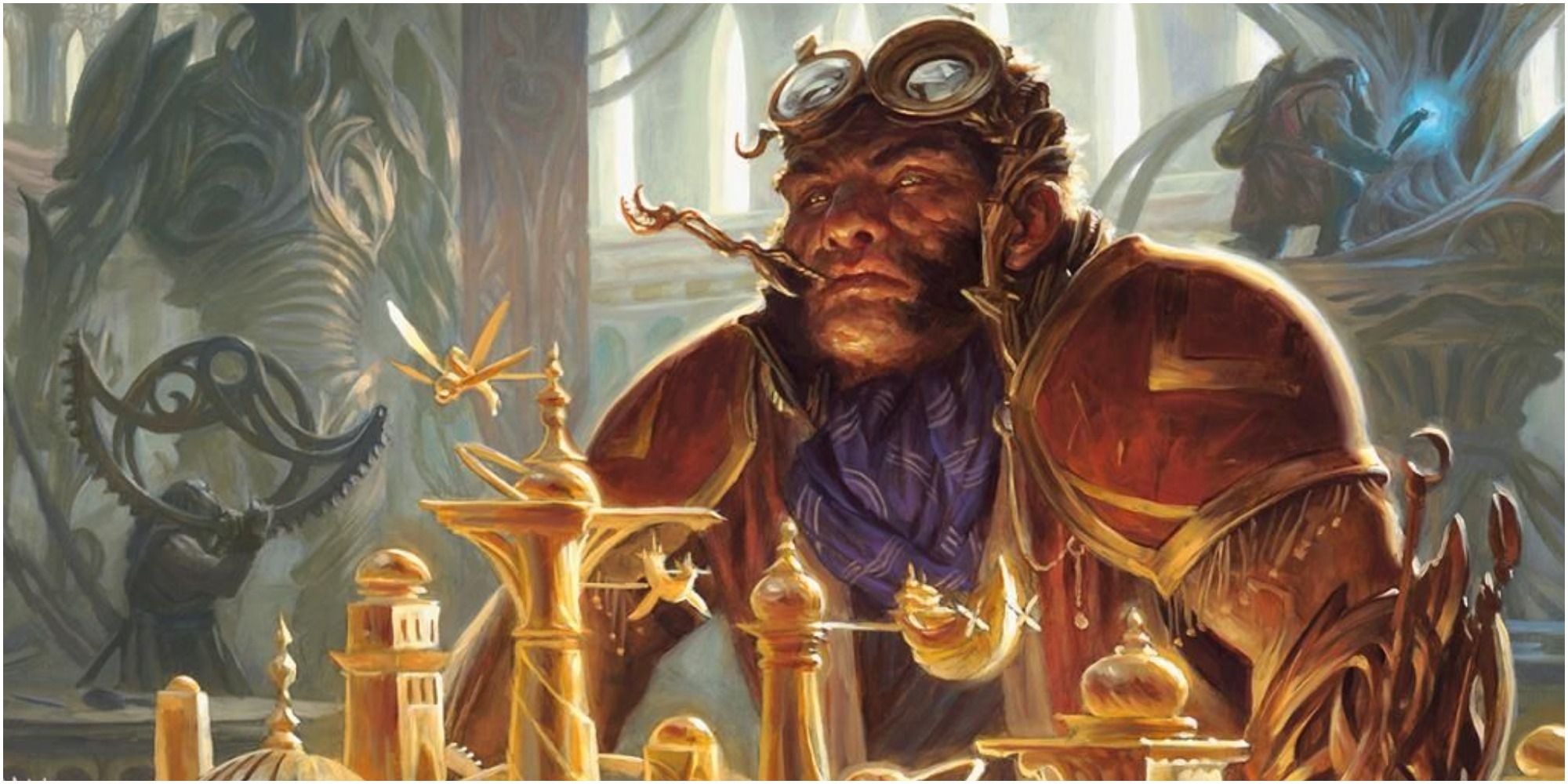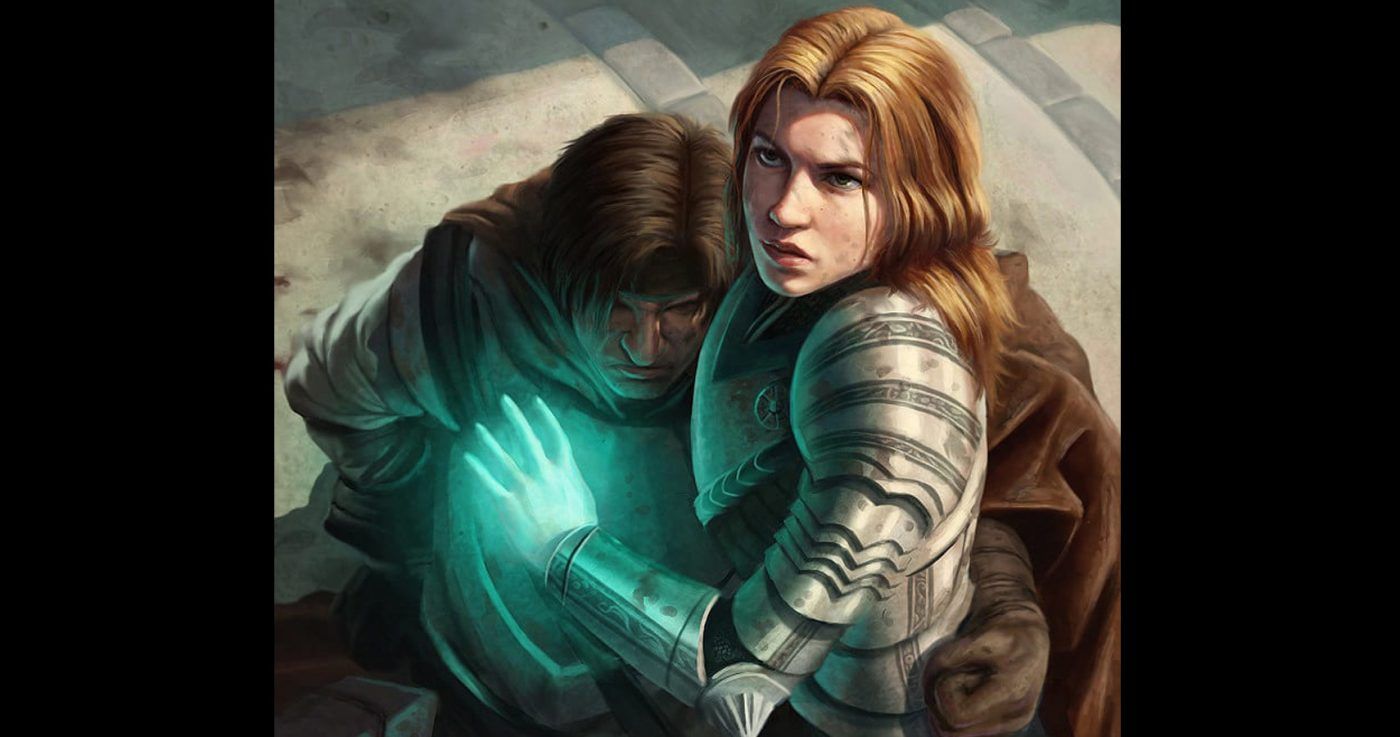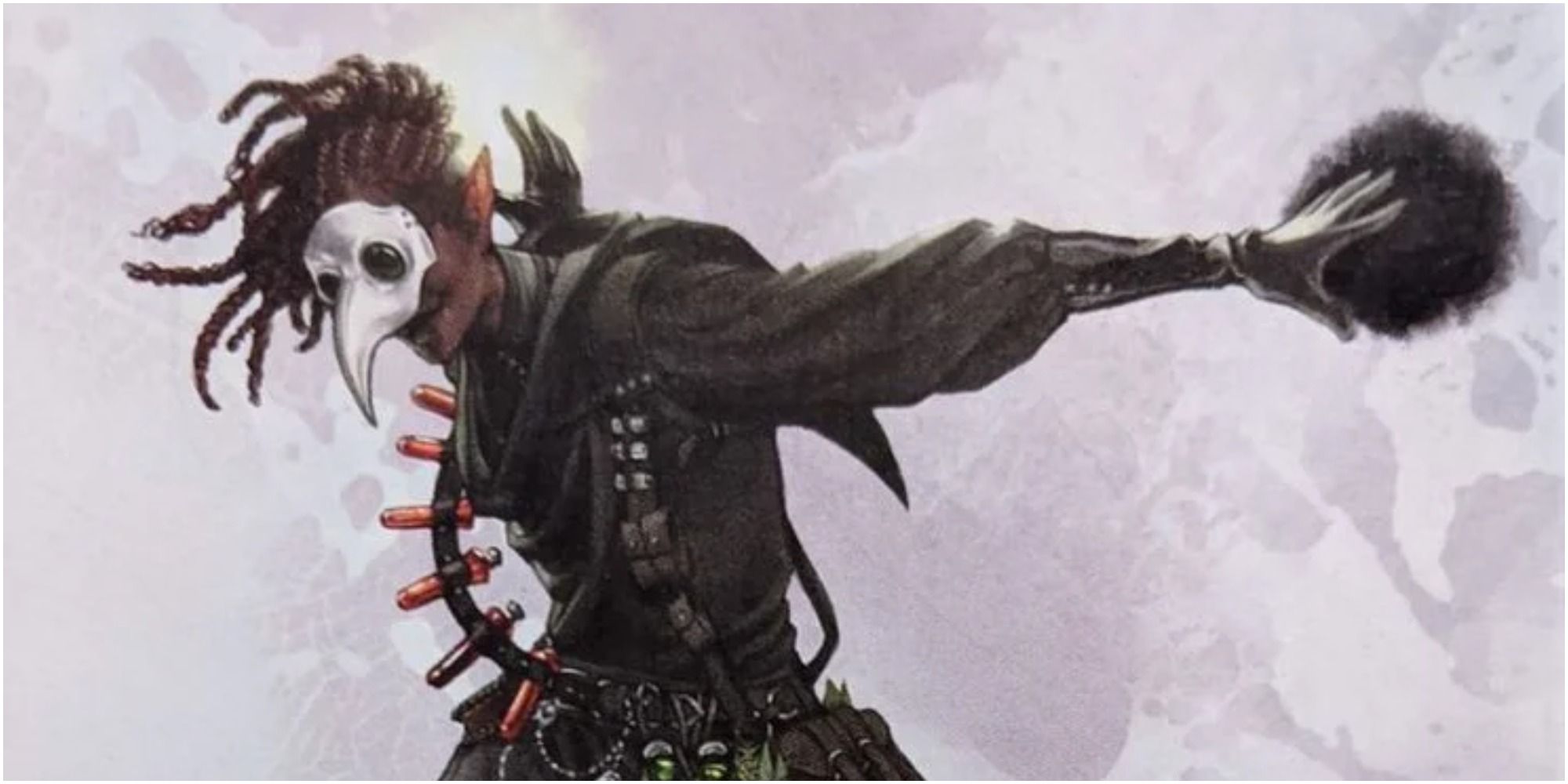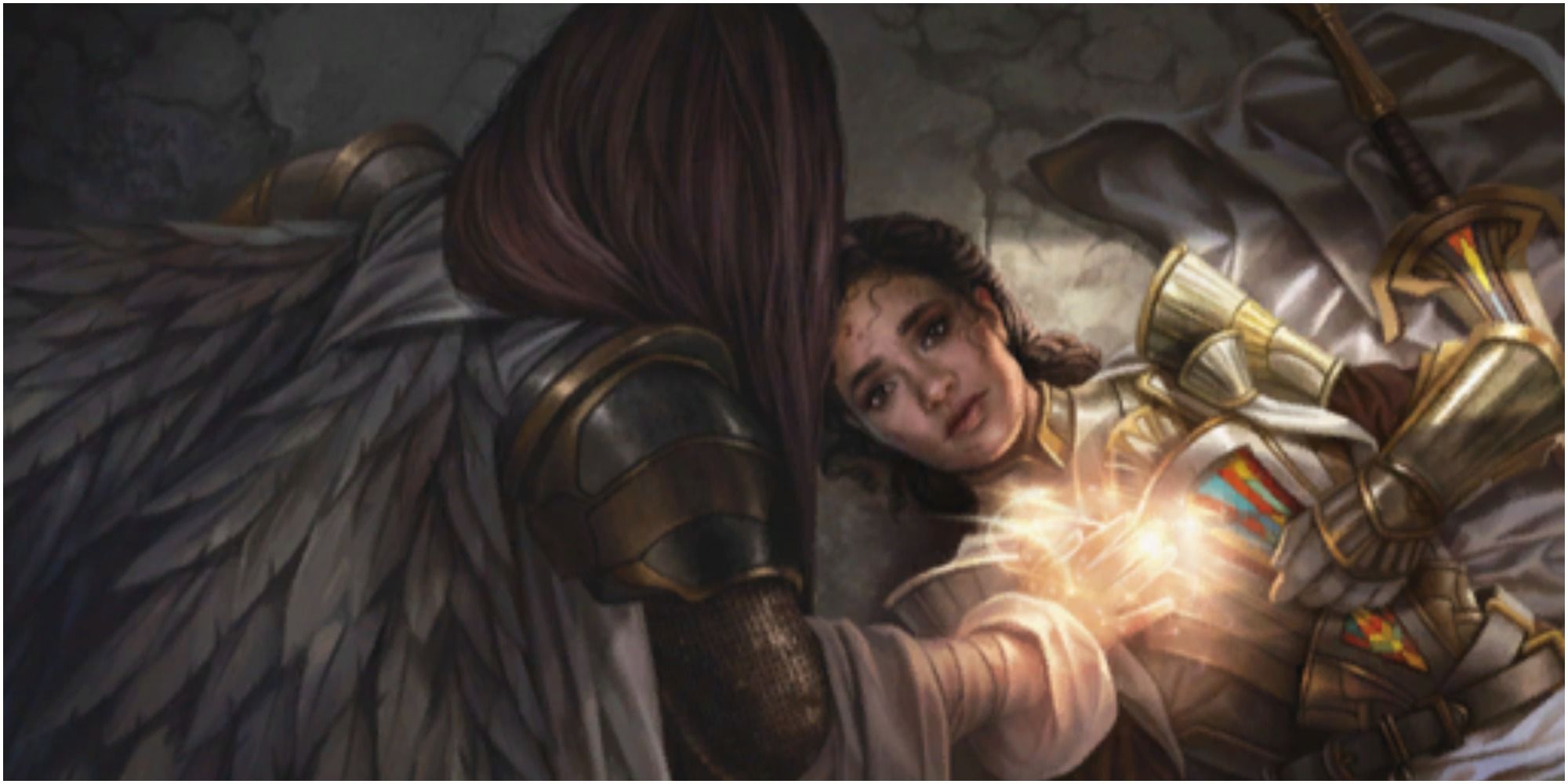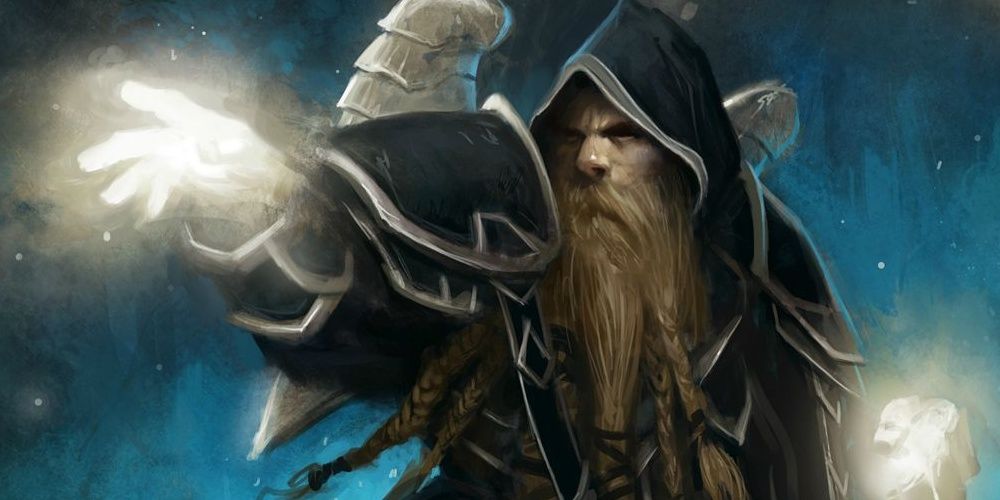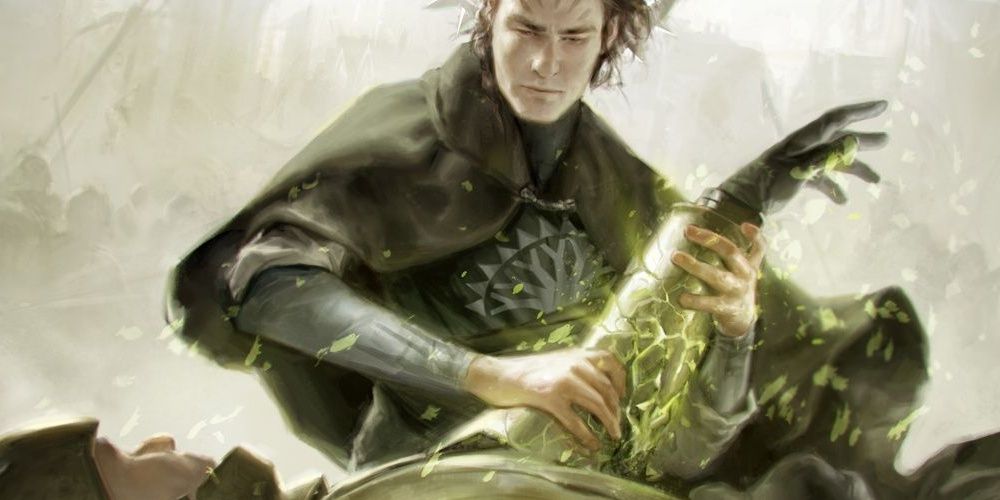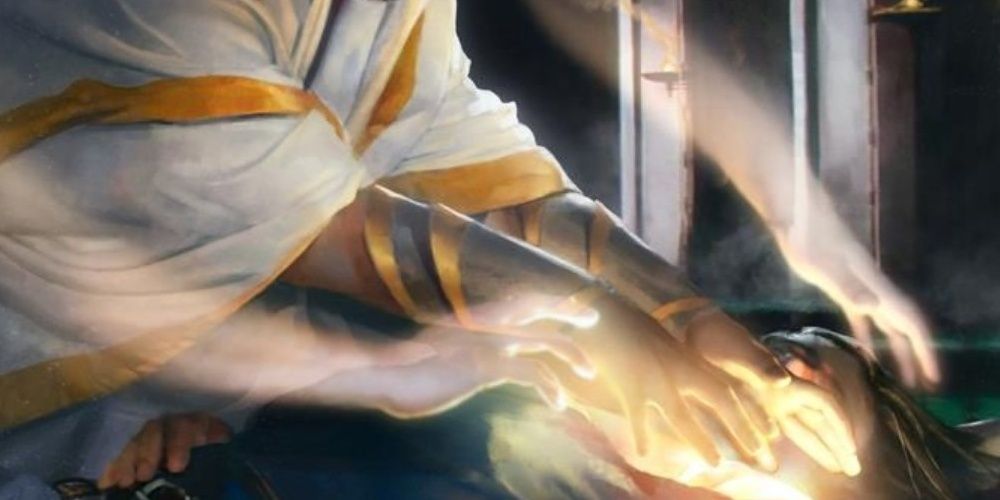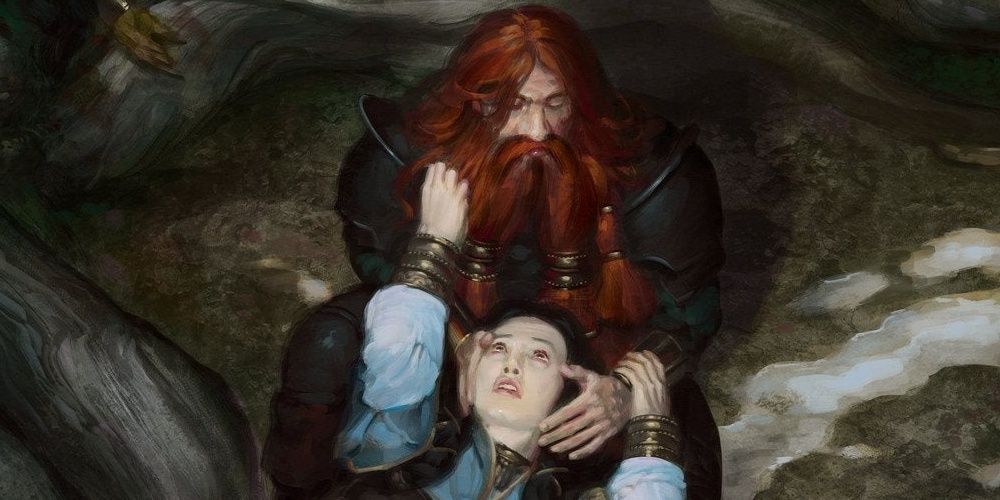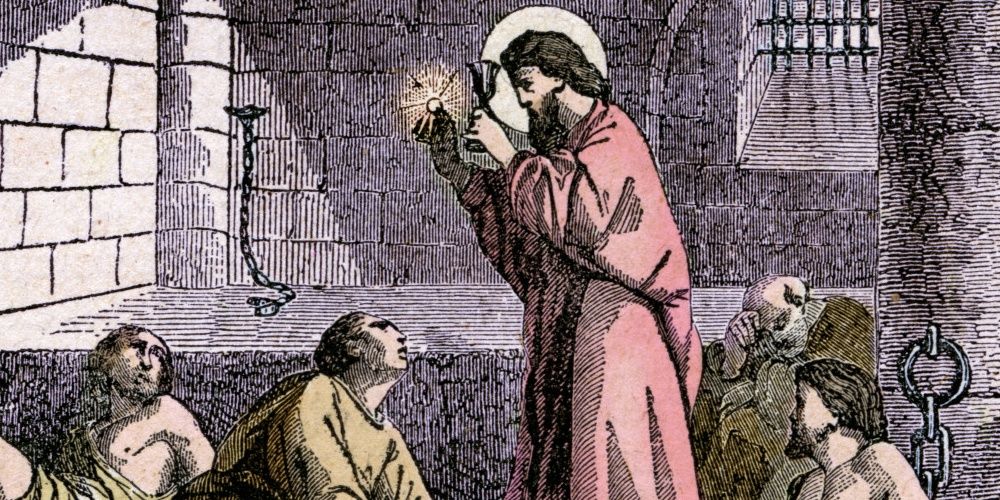Bring your allies back from the brink with these powerful healing spells & abilities.
You and your allies walk along the trail to Corben, a nearby township. You have traveled many miles to make this journey, but it is finally coming to an end. As the trail turns a corner, you can see a ransacked caravan. The horses are still attached to the wagon, though their bellies are full of arrows and their bodies rest in pools of their own blood. Suddenly, a new hail of black-feathered arrows whistles towards you from the nearby pines. You bring up your shield to block the barrage, but your friend is less fortunate.
The volley strikes him and he stumbles, gasping for air. Calling upon He of the Unsleeping Eyes, you reach out and touch your ally and his skin glows an iridescent gold. The arrows submerged in his body wiggle their way out and the wounds left in his skin miraculously mend. You are one of Helm's chosen, a guardian and protector. And as long as you draw breath, your party shall not falter.
Updated on April 18, 2021, by Paul DiSalvo: With the recent introduction of several new subclasses in Tasha’s Cauldron of Everything, there are yet even more helpful ways that players can heal their allies and themselves. While some of these new healing abilities provide additional utility to classes that already tote healing capabilities, some of these new healing abilities provide support effects to classes that wouldn’t have them otherwise.
15 Experimental Elixir (Artificer: Alchemist)
The Artificer class was officially added to D&D’s fifth edition in Tasha’s Cauldon of Everything, bringing its support-focused Alchemist subclass along with it. Upon finishing a long rest, an alchemist is able to produce an Experimental Elixir with a randomly selected effect.
While an alchemist is unable to directly choose which effect their Elixir provides, they are each beneficial with some offering HP while others offer a temporary buff. Additionally, upon reaching level nine, and alchemist gains the Restorative Reagents ability, causing their elixir to always provide an additional 2d6 HP.
14 Balm Of Peace (Cleric: Peace Domain)
The recent addition of the Peace Domain Cleric in Tasha’s Cauldron of Everything provides an already incredible class with additional utility, allowing one’s allies to more easily protect each other. Additionally, it comes with a useful healing ability in the form of its Channel Divinity, the Balm of Peace.
Allowing the cleric to move a distance equal to their speed as an action, the cleric may have any of their allies they moved within 5 feet of gain an amount of HP equal to 2d6 plus their wisdom modifier.
13 Starry Form: Chalice (Druid: Stars)
The newly minted Circle of the Stars Druid subclass provides a druid with an alternative to their traditional Wild Shape through the ability Starry Form. Upon activating Starry Form, a Druid can choose one of three constellations that will further augment their abilities. Of these constellations, the Chalice allows the druid to gain twice the value from their healing spells.
As long as the Chalice constellation is active, whenever a druid uses a spell to heal a creature, they can automatically cause another creature within thirty feet to gain an amount of HP equal to 1d8 plus their wisdom modifier. This allows a spell such as healing word to potentially stabilize two creatures at once!
12 Hands Of Healing (Monk: Way Of Mercy)
One of the most noteworthy additions that Tasha’s Cauldron of Everything brought to healing in D&D is the inclusion of Way of Mercy subclass for Monks. Rather than using their Ki points to deal damage, these monks boast the Hands of Healing ability that allows them to convert their Ki into health for their allies.
Each Ki point restoring an amount of HP equal to their martial arts die plus their wisdom modifier. Additionally, this ability only improves with time, as at level eleven, these Monks can convert their flurry of blows into a flurry of healing, all without spending Ki.
11 Heal
A sixth level spell available to clerics and druids, Heal is among one of the most consistent healing spells in all of D&D. This is because unlike the vast majority of spells in the game, Heal completely circumvents dice rolling, allowing its target to regain a fixed amount of HP, healing 70 HP plus an additional 10 for each spell level above six the spell is cast as.
This can help mitigate low rolls when large sums of HP are immediately needed. As if this consistency wasn’t enough, this spell also cures blindness, deafness, and any disease the target may be suffering from.
10 Lesser restoration
It may surprise you that the first spell on this list doesn’t offer any hit point healing. But there are many situations and monsters in the worlds of dungeons & dragons that attack players from angles outside of direct damage.
Lesser Restoration is a first level spell that answers just about anything besides hit point loss. Poisoned, blinded, deafened, and paralyzed are all extremely inhibiting conditions inflicted by a large number of enemy attacks and abilities. Any truly dedicated healer needs this spell as it’s one of the few immediate ways to answer such afflictions.
9 Aid
This is a second-level spell that is often misunderstood due to its unclear description. Aid increases your total hit points and current hit points by five, in other words healing up to three characters by five HP. The reason it’s worded so strangely is so that the spell is useful before a character takes damage, which is what makes it especially good.
The five-point health boost lasts for eight hours, meaning you can cast aid well before encountering danger and still reap the benefits. This is also one of very few spells that allow you to resuscitate multiple party members with a single action.
8 Cure wounds
Ah, and so we come to the well-known Cure Wounds spell. If you mention healing in any Dungeons & Dragons context, this is the spell most likely to come to mind. It is the most basic of the healing options available in the game, yet still effective in its own right.
The biggest problem with Cure Wounds is the unreliability of the roll along with its short range of touch. In a pinch, Cure Wounds gets the job done. But if this is the only healing ability available to your party, you may find yourselves in grave danger sooner rather than later.
7 Cutting words (Bard: College of Lore)
Even though it may not restore hit points, Cutting Words makes this list because it can prevent them from ever being lost. Additionally, it’s a reaction ability, giving most characters an additional action they would not be able to take otherwise.
Cutting Words allows the bard to turn their inspiration die against the opponent’s attacks, reducing the enemy’s attack roll by the result of their die. As if that wasn’t good enough, a player can choose to use Cutting Words after they know the total of the attacker’s roll.
6 Lay on Hands (Paladin)
Every paladin gains access to the Lay on Hands ability, which is packaged into their class kit. Lay on Hands is powerful due to its versatility. While it may have a range of touch, Lay on Hands allows you to choose exactly how many hit points you would like to restore to the target. No dice rolls. No chances of bad luck. The amount of hit points you can restore equals your paladin level times five, which adds up to a large sum.
Additionally, Lay on Hands can cure poisons and diseases, making it even more useful. One of the best ways to use Lay on Hands is as a full heal on a party member knocked unconscious. You can spend all but one of your points to almost entirely restore a character, saving your very last point in case of an emergency.
5 Healing Word
This spell may restore fewer hit points than cure wounds on average, but it is ultimately more valuable. It only costs a bonus action and has a range of sixty feet. You may think that you will often be in touch range during combat but we can tell you from experience this is not the case.
A crafty Dungeon Master will present enemies and terrain that require you to split up in order to effectively deal with the threats. When this occasion inevitably rises, the last thing you'll be thinking about is rolling 1d8 instead of 1d4.
4 Healing light (Warlock: Celestial)
Warlocks are often considered the darkest and most evil of the D&D character classes available. A consideration which is, mostly, true. But you might be surprised to find out that the celestial warlock subclass has access to one of the most potent healing abilities in the game.
Healing Light gives you a number of d6 equal to one plus your warlock level which you can expend as a bonus action to restore hit points to an ally within sixty feet. The celestial warlock’s healing light is a powerful reminder that from the darkest nights shine the brightest stars.
3 Spirit totem (Druid: Circle of the Shepherd)
Spirit Totem is extremely effective because it allows you to heal multiple allies within a single turn. As a bonus action, you can summon the Unicorn Spirit. While the spirit persists if you use a spell slot to return hit points to any creature inside or outside its aura, all creatures of your choice inside the aura regain hit points equal to your druid level.
Meaning you can heal an ally at your feet and also return hit points to your allies across the battlefield. Plus, who wouldn't want to roleplay a Spirit Unicorn? I would name mine Kevin.
2 Disciple of Life (Cleric: Life Domain)
The original best healing ability comes from the Cleric class, and rightfully so. Nothing speaks to the powers of restorative magic more so than a priest that worships a god in order to receive his or her divine magical powers. The Disciple of Life ability increases the healing done by all healing spells you cast by two plus the spell's level. Turning your Healing Word into ranged Cure Wounds, and your Cure Wounds into a reliable heal no matter what your roll may be.
The Life Domain cleric's Channel Divinity: Preserve Life is the icing on top. In case you ever run out of spell slots or need to heal multiple allies, your Channel Divinity allows you to heal any creatures within 30 feet of you by a number of hit points equal to five times your cleric level. As far as raw healing power is concerned, the Life Domain cleric reigns supreme.
1 Circle of mortality (Cleric: Cleric of the Grave)
If the Life cleric is the master of keeping characters alive, the cleric of the Grave is the de facto king of returning them from the edge of the abyss. Due to the way the action economy works in Dungeons & Dragons 5th edition, it’s often most beneficial to use healing spells only after a character has been knocked unconscious.
When restoring hit points to a creature that currently has zero, instead of rolling dice to determine the total you use the maximum number on said hit die. For example, if you were to use a second level Cure Wounds on an unconscious party member, instead of rolling 2d8 and adding your Wisdom modifier you would restore a flat sixteen hit points plus your Wisdom modifier.
This is absolutely insane. When it comes to healing, Circle of Mortality is the best boon the game has to offer.


